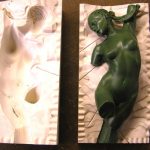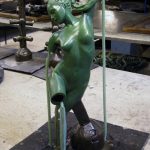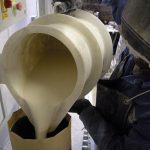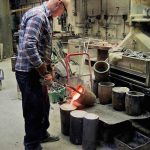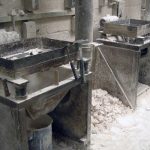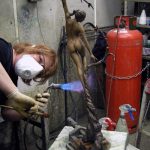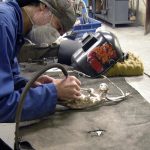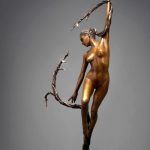FOUNDRY PROCESS
The Lost Wax Technique
One of man’s earliest technologies dating back at least 6000 years and shrouded in the mystery of alchemy…
The process involves many hours of skilled labour starting with the making of a silicone rubber mould of the original sculpture.
Wax is then painted into the mould or poured into it then immediately out again to create a hollow wax cast of the original a bit like an easter egg in thickness. When the wax cast is cool wax rods called runners are welded to it by hand.
The wax model is then encased in a mixture of plaster and grog which is painted on or sometimes poured. This has to be carefully done in order to capture the detail of the model as this will be the final moulding into which the hot metal is poured.
The finished block mould is then heated to 700 degrees centigrade in the kiln to melt the wax and harden the mould. The wax is then poured out leaving behind a perfect negative space of the original model.
The mould is now ready to be filled with molten bronze. The metal fills the space where the wax used to be along with the runners.
When the bronze has set hard and cooled the mould is broken away leaving only the bronze and runners behind.
It then goes to the metalworkers for fettling to take off the runners and to weld any parts together if the model needed to be made in sections. At this stage the bronze is a bright gold in colour.
The figure then goes to patination which is the final finish. Using a blow torch the patineur applies a thin coat of coloured chemicals to the metal sculpture with a brush at the same time heating it with a torch to adhere it to the surface.
We now have a finished bronze and it becomes clear just how many skilled hands have been involved in getting to the final stage!
Copyright © 2024 Neil Welch. All rights reserved.


